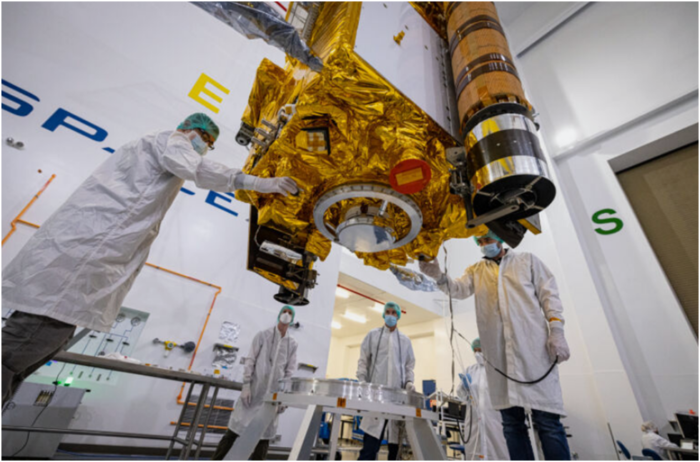As More And More Information Comes In About The Crash, Astronomers Are “Stoked.”
The crash of NASA’s DART spacecraft into the asteroid Dimorphos on September 26 was caught on camera by telescopes in space and on Earth. NASA’s associate administrator for science, Thomas Zurbuchen, called the crash “an enormous success” and the first time humans tried to move a celestial body.
Andy Rivkin, a planetary scientist who works on the mission at the Johns Hopkins University Applied Physics Laboratory in Laurel, Maryland, says, “We’re all pretty excited here.”
LICIACube, a small Italian spacecraft that flew with DART and took pictures of the impact, gave us a view from the centre of the ring. The impact happened 11 million kilometres from Earth. The Italian Space Agency released the first LICIACube pictures on September 27. They show a large plume that looks like fireworks coming off of Dimorphos after DART crashed into it. The cloud of rocks and other debris grew quickly, like a big puff of smoke.
Elisabetta Dotto, who is in charge of LICIACube’s science team at the National Institute for Astrophysics in Rome, told reporters that studying how the plume changes will help them learn more about how Dimorphos is made. By looking at how the plume formed and spread, scientists can figure out how much of DART’s kinetic energy was used to throw debris away from Dimorphos and how much might have been used to change the asteroid’s orbit, which was the goal of the mission.
The spaceship as a whole is done. Megan Bruck Syal, a physicist at the Lawrence Livermore National Laboratory in California, says, “A lot of it is crushed, and some of it is melted.” “It’s hard to say, but I don’t think big pieces will be left.”
The Complete Guide To NASA’s DART Mission To Destroy Asteroids

With the “kinetic impactor” method, NASA’s Double Asteroid Redirection Test (DART) mission was meant to test a way to move an asteroid away from a planet to protect it.
NASA says that DART hit a small asteroid called Dimorphos in order to change its orbital speed by a fraction of a percent (opens in new tab). Even though Dimorphos doesn’t pose a threat to Earth, the ambitious mission is like what NASA scientists would do if an asteroid was heading toward Earth.
The DART mission was sent into space on November 23, 2021, at 10:20 p.m. local time (1:20 a.m. EDT or 06:20 GMT), using a SpaceX Falcon 9 rocket from Space Launch Complex 4 at the Vandenberg Space Force Base in California.
The mission shows how important it is for people from all over the world to work together on such an ambitious task. Even though the Johns Hopkins University Applied Physics Laboratory (JHUAPL) is in charge of the DART mission, scientists and engineers from all over the world have come together to help.
Ellen Howell, a senior research scientist at the University of Arizona Lunar and Planetary Laboratory and a co-investigator for DART, told Space.com, “We’ve worked very closely with our European colleagues and colleagues from all over the world.” She said that even though DART is just a test, the same level of international cooperation would be needed if there was a real impact.
A ‘Big Jumble Of Rocks’
At 7:14 p.m. US Eastern Time, DART hit its target, which was the size of the Great Pyramid. After a little more than three hours, the first images from LICIACube were sent to a control centre in Turin, Italy.
Even though it threw out a huge cloud of debris, Dimorphos is still mostly whole. This was shown by other pictures taken by ground-based telescopes of the impact, which showed the plume puffing outwards as the rest of the asteroid continued to speed forward. Dimorphos is mostly visible from the Southern Hemisphere right now, so these first observations came from places like Réunion Island in the Indian Ocean and South Africa, which have telescopes. Dozens of telescopes are still keeping an eye on it to see if its path has changed.







![SIMS 4 Download Free For PC Full Version 2019 [UPDATED] SIMS 4 Download](https://www.geniustechie.com/wp-content/uploads/2019/03/SIMS-4-Download-100x70.jpg)

